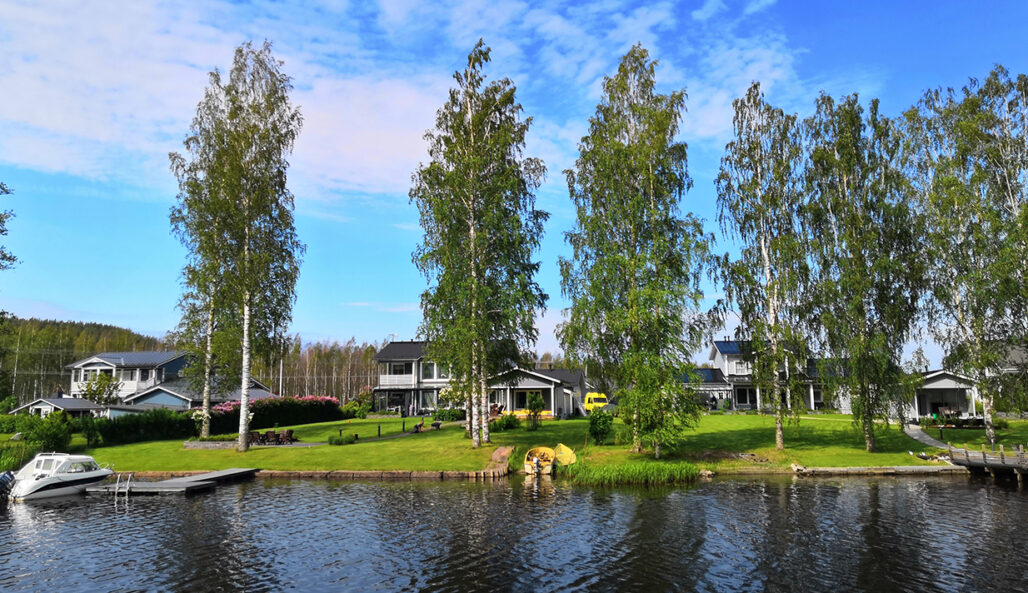
Harviala
Harvialan kylä sijaitsee Hiidenjoen tuntumassa Harvialan kartanon vanhassa kulttuurimaisemassa. Merkkejä asutuksesta alueella löytyy aina 1300-luvulta asti.
Niin kuin lähes jokaisen muunkin janakkalalaisen kylän, niin myös Harvialan historiasta löytyy kartano. Harvialan kartanon saleissa ehti kulkea lukusia sotapäälliköitä, ritareita, maamarsalkkoja vapaaherroja sen siirtyessä suvulta toiselle lähes 500 vuoden ajan. Myöhemmin kartano myytiin useampaankin otteeseen. Nykyisen maisemaa leimaavan taimitarhatoiminnan voi katsoa alkaneen kun tilasta muodostetun Harviala Oy:n osakkeet vuonna 1913 myytiin W.Rosenlew & Co osakeyhtiölle. Tuolloin tilan kokonaispinta-ala oli huikeat 13 500 ha. 1920-luvulla Harvialassa panostettiin karjanjalostukseen. Karjan runsaasta määrästä kertoo edelleen massiivinen tiilinavetta, Alikartano, joka on nykyään taimitarhan käytössä. Harviala Oy on luopunut maa-, metsä- ja karjataloudesta ja keskittynyt koristetaimien, erityisesti kotimaisten lehti- ja havupuiden tukkukauppaan.
Itse kartano sekä ns.konttori ja pakkaamo myytiin 2020 uudelle omistajalle, joka on remontoimassa kartanosta kotia ja virittelemässä alueelle muutakin toimintaa.
Piharakennuksiin on virinnyt myös käsityövaltaista yritystoimintaa. Viehättävässä kartanomiljöössä valmistetaan mm. maailmankuulut Ruokankaan sähkökitarat.
Harvialassa sijaitsi myös yksi kolmesta Janakkalan rautatieasemasta. Paikkakunnan erikoisuus oli 1917 valmistunut metsärautatie, jota oli jo edeltänyt hevosrautatie. Metsärataa käytettiin etupäässä puutavaran kuljettamiseen laajoista metsistä, ensiksi jokeen uitettavaksi ja myöhemmin rautatien varteen juniin lastattavaksi. Liikenne metsärautatiellä päättyi 1955 ja se purettiin samaa linjausta käyttävän tien alta.
Harviala tänään
Janakkalan kunta hankki Harvialan alueen v. 1989 käytettäväksi yhdyskuntarakentamista varten. Harvialan alueesta rautatien eteläpuolella sijaitseva Hiidenjoen rantaan rajoittuva peltoalue on asemakaavoitettu asumiseen ja pääasiassa pientalorakentamista varten. Alueelle on rakentunut noin 100 omakotitaloa. Harvialan kartano ja kulttuurimaisema ovat rakennustensa, teollisuutensa ja maisemakokonaisuutensa vuoksi merkittäviä. Kartanon navetta ja Katajamäen työväen asuntoalue kuuluvat yleiskaava-alueeseen. Harvialan aluetta rajaa pohjoisessa rautatie. Hiidenjoki ja Pikkujoki muodostavat luonnollisen rajauksen alueelle etelässä ja lännessä.
Asuinalue sijaitsee kauniilla paikalla Hiidenjoen varrella, omassa rauhassa, mutta kuitenkin vain kymmenen minuutin ajomatkan päässä palveluista. Turenkiin on matkaa noin 6 km. Alueelta on hyvät yhteydet myös Hämeenlinnaan.
Lapsiperheitä palvelee koulu ja päiväkoti. Laajat viheralueet tekevät asuinalueesta viihtyisän asuinpaikan, jonka kruunaa joen tuomat virkistysmahdollisuudet. Hiidenjoki on osa merkittyä venereittiä, jota pitkin pääsee aina Tampereelle saakka.
Uudella asuinalueella on oma leikkipuisto ja pelikenttä jalkapallomaaleineen. Joen varressa on kotalaavu (Ämmännokassa), pieni hiekoitettu uimaranta ja Janakkalan kunnan vuokraamia veneiden paalutettuja rantapaikkoja.
Harvialan Alikartanon veneiden laskupaikkaa ja veneiden maallevetopaikkoja vuokraa Harvialan Kölikerho. Venepaikkatiedustelut harvialan.venekerho@gmail.com.
Muuta mielenkiintoista
Harvialan kartanoaluetta on ympäröinyt puutarha ja puisto, jossa kasvaa edelleen useita harvinaisiakin jalopuita. Harvinaisimmista puista mainittakoon komea amerikanjalopähkinä keltaisen konttorirakennuksen kulmalla, pensaana kasvava oratuomi ja hyvin erikoinen kääpiölännenpihta. Liekö ilmastonmuutoksen vaikutusta vai ei, mutta puistoalueen reunoilla voidaan tätä nykyä nähdä hyvin runsaasti esim. isolehtilehmuksen ja japaninpihdan siementaimia. Jalopuiden sijainnin voi katsoa kartanon pihalla olevasta opaskartasta, maastossa ne on merkitty nimikyltein.